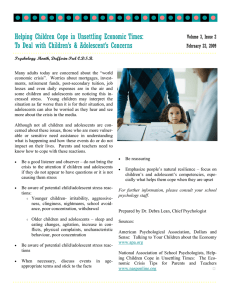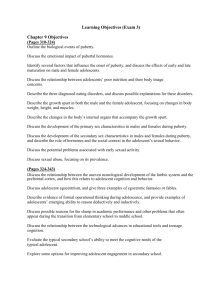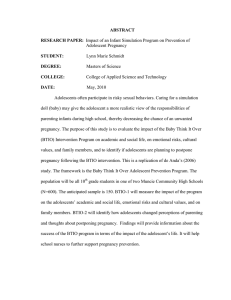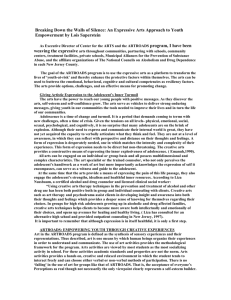What is Youth Development?
advertisement
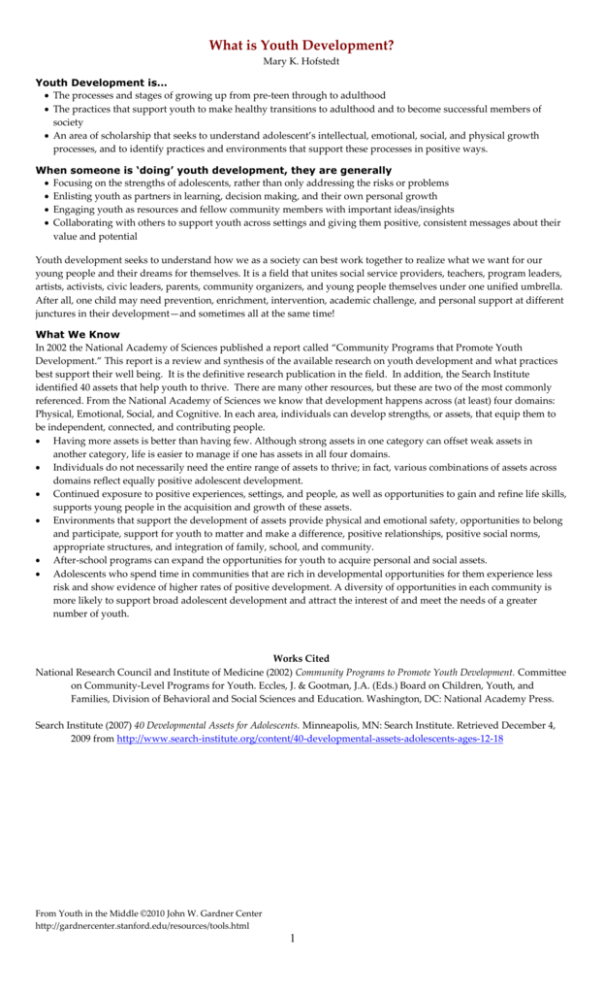
What is Youth Development? Mary K. Hofstedt Youth Development is… The processes and stages of growing up from pre-teen through to adulthood The practices that support youth to make healthy transitions to adulthood and to become successful members of society An area of scholarship that seeks to understand adolescent’s intellectual, emotional, social, and physical growth processes, and to identify practices and environments that support these processes in positive ways. When someone is ‘doing’ youth development, they are generally Focusing on the strengths of adolescents, rather than only addressing the risks or problems Enlisting youth as partners in learning, decision making, and their own personal growth Engaging youth as resources and fellow community members with important ideas/insights Collaborating with others to support youth across settings and giving them positive, consistent messages about their value and potential Youth development seeks to understand how we as a society can best work together to realize what we want for our young people and their dreams for themselves. It is a field that unites social service providers, teachers, program leaders, artists, activists, civic leaders, parents, community organizers, and young people themselves under one unified umbrella. After all, one child may need prevention, enrichment, intervention, academic challenge, and personal support at different junctures in their development—and sometimes all at the same time! What We Know In 2002 the National Academy of Sciences published a report called “Community Programs that Promote Youth Development.” This report is a review and synthesis of the available research on youth development and what practices best support their well being. It is the definitive research publication in the field. In addition, the Search Institute identified 40 assets that help youth to thrive. There are many other resources, but these are two of the most commonly referenced. From the National Academy of Sciences we know that development happens across (at least) four domains: Physical, Emotional, Social, and Cognitive. In each area, individuals can develop strengths, or assets, that equip them to be independent, connected, and contributing people. Having more assets is better than having few. Although strong assets in one category can offset weak assets in another category, life is easier to manage if one has assets in all four domains. Individuals do not necessarily need the entire range of assets to thrive; in fact, various combinations of assets across domains reflect equally positive adolescent development. Continued exposure to positive experiences, settings, and people, as well as opportunities to gain and refine life skills, supports young people in the acquisition and growth of these assets. Environments that support the development of assets provide physical and emotional safety, opportunities to belong and participate, support for youth to matter and make a difference, positive relationships, positive social norms, appropriate structures, and integration of family, school, and community. After-school programs can expand the opportunities for youth to acquire personal and social assets. Adolescents who spend time in communities that are rich in developmental opportunities for them experience less risk and show evidence of higher rates of positive development. A diversity of opportunities in each community is more likely to support broad adolescent development and attract the interest of and meet the needs of a greater number of youth. Works Cited National Research Council and Institute of Medicine (2002) Community Programs to Promote Youth Development. Committee on Community-Level Programs for Youth. Eccles, J. & Gootman, J.A. (Eds.) Board on Children, Youth, and Families, Division of Behavioral and Social Sciences and Education. Washington, DC: National Academy Press. Search Institute (2007) 40 Developmental Assets for Adolescents. Minneapolis, MN: Search Institute. Retrieved December 4, 2009 from http://www.search-institute.org/content/40-developmental-assets-adolescents-ages-12-18 From Youth in the Middle ©2010 John W. Gardner Center http://gardnercenter.stanford.edu/resources/tools.html 1



